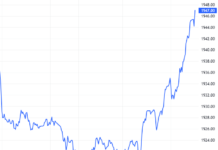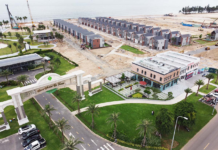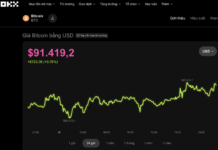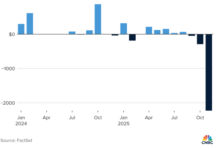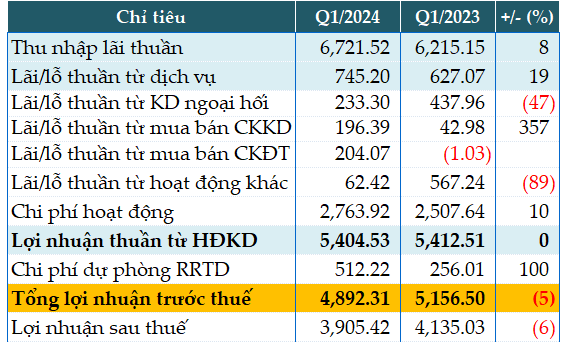Sacombank’s leadership revealed that the bank is implementing a VND 35 trillion short-term credit package to support production and business activities, and a VND 10 trillion consumer loan package. Both loan packages have a short-term interest rate starting from 6% per annum and a medium to long-term interest rate starting from 7% per annum. Particularly, for consumer loans, the bank applies a fixed interest rate of 6.5% per annum for 6 months, 12 months, or 24 months, attracting interested customers.

Many preferential credit packages for customers in the new year
Similarly, many other banks such as BIDV, Agribank, SHB, ACB, BVBank, NamABank, HDBank… have also offered various credit packages to support production and business activities, and consumption since the beginning of the year. For example, HDBank’s VND 5 trillion credit package applies a 0% interest rate in the first month and then applies an interest rate ranging from 6.7% per annum in the following months. LPBank has a consumer credit package with a maximum loan limit of VND 2 billion per customer and an interest rate of 6.5% per annum. Agribank is actively promoting a VND 15 trillion personal loan package to serve production and business activities with an interest rate lower than the bank’s benchmark interest rate by at least 1.5%…
According to commercial banks, compared to the same period last year, the demand for loans from businesses and individuals has slowed down in early 2024. Meanwhile, banking business units are actively increasing loan disbursements with low interest rates to expand their customer base.
In addition to the preferential credit packages offered by banks, the connection between banks and businesses at the local level has been established since the beginning of the year. Mr. Vuong Tri Phong, Director of the State Bank of Vietnam (SBV) in Dong Thap province, said that the credit institutions in the province are striving to connect with businesses operating in the Sa Dec Industrial Park. They will also coordinate with relevant departments and agencies to remove difficulties within the scope of the bank, thereby creating favorable conditions for businesses to increase credit limits and facilitate lending in the first quarter of 2024.
Similarly, Mr. Ho La Thanh, Director of the SBV branch in Hau Giang province, also stated that at the beginning of February 2024, credit institutions in the area held a conference to connect with nearly 100 businesses, cooperatives, and individual business households. At this conference, in addition to the loan agreements signed directly between banks and businesses, banks have also committed to increase credit limits for member businesses of the Young Entrepreneurs Association in Hau Giang province.
Prior to that, HDBank had connected with production and export enterprises of rice. Accordingly, if an enterprise has a capital need, the bank will increase its loan limit to VND 200-500 billion this year. Can Tho also proposed that HDBank study and offer loan products for enterprises in the durian industry, serving about 3,800 hectares of plantation in the province that have been assigned a planting area code.
From these developments, it can be seen that banks have quickly responded to the directions of the SBV to ensure effective credit growth, meeting the capital needs of businesses and individuals, and contributing to economic growth.
2024 – Opportunities and Challenges
Mr. Ngo Quang Trung, CEO of BVBank, said that the biggest challenge is concern about the deterioration of asset quality and bad debts in the credit system, which is expected to increase in the first half of 2024. Unfavorable macroeconomic developments have quickly eroded the health of the domestic economy, businesses, and consumers. Flexible solutions directed and implemented by the Government and SBV at commercial banks have greatly assisted the business community, residents, as well as the credit institutions themselves in coping with the negative economic developments over the past time. However, the weak demand lasting in commodity and service markets, the real estate market’s slow recovery can continue to exert great pressure on asset quality of credit institutions in the first half of 2024.
The second challenge is the instability of global political and economic situations that can continue to negatively impact exports and domestic economic activities, thereby negatively affecting the credit institutions. Some parts of the picture have been clearly shown in late 2023 when interest rates are very low, but credit growth remains slow compared to the target.
The third challenge is for the SBV to find a balance between policies that maintain low-interest rates to stimulate economic development while controlling inflation. On the other hand, the SBV also has to withstand pressure to control exchange rates in the context that the interest rates of some strong currencies have not been lowered rapidly to restrict capital outflows. These pressures have emerged since the Covid-19 pandemic. However, in the period of 2023-2024, the requirement to boost economic development is higher due to the unsatisfactory economic growth, weak credit demand, and illiquid real estate market.
In addition to challenges and difficulties, the banking industry also faces opportunities in 2024. The first opportunity is the economy showing positive signs of recovery. Although 2023 was a difficult year with slow growth and strong headwinds, the economy may have a more positive recovery in 2024 with a GDP growth rate of over 6%. Therefore, the credit demand may improve, and the business outlook of credit institutions will be better. The second opportunity is the fiscal-monetary policies to stimulate economic growth through credit expansion, maintaining low-interest rates, promoting investment in certain areas, will continue to be strongly implemented.

